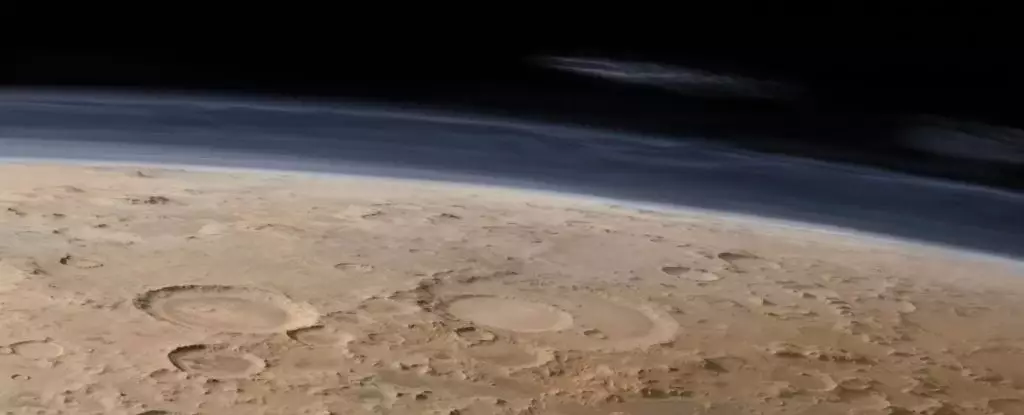The quest to understand the evolution of Mars’ atmosphere has gained significant momentum thanks to groundbreaking research conducted by a team of scientists led by Shannon Curry, a planetary scientist at the University of Colorado Boulder. After meticulously analyzing over nine years’ worth of satellite data, they have made a pivotal breakthrough in their understanding of atmospheric sputtering, an elusive yet critical process believed to have shaped the Martian environment. This discovery provides valuable insights into how Mars has lost its atmosphere, and consequently, its water — a topic that raises profound questions about the planet’s habitability over time.
Atmospheric sputtering occurs when charged particles, propelled by the solar wind, collide with a planet’s atmosphere. In the case of Mars, the absence of a protective global magnetic field means that its atmosphere is directly vulnerable to these solar intrusions. When energetic ions collide with atmospheric atoms, energy is transferred in a way that some particles achieve escape velocity, ultimately leading to their journey into the cosmos. Understanding this mechanism is essential for piecing together the larger puzzle of Mars’ climatic history, and the implications of the team’s findings cannot be overstated.
The Role of MAVEN
Essential to this monumental discovery was NASA’s MAVEN (Mars Atmosphere and Volatile Evolution) spacecraft, the only one equipped and positioned to capture the necessary data. By simultaneously observing the solar electric field, the atmospheric composition, and carrying out extensive stratification of the data collected since MAVEN’s arrival in Mars orbit back in September 2014, the researchers were able to achieve a level of insight previously unattainable. This scientific endeavor not only highlights the importance of advanced space exploration technology but also exemplifies how multi-disciplinary approaches can lead to significant revelations about our neighboring planet.
The study revealed a strong correlation between the solar wind’s orientation and the density of argon at high altitudes on Mars. Most notably, lighter isotopes of argon were found to fluctuate based on solar activity, leaving behind a higher concentration of heavy argon. This discrepancy suggests that atmospheric sputtering is occurring at unprecedented rates, exceeding prior expectations by more than fourfold.
Uncovering Ancient Martian Storms
Perhaps the most fascinating aspect of this research is its potential to illuminate conditions that existed billions of years ago when the Sun was younger and more volatile. The recent analysis during a solar storm in January 2016 provided a unique opportunity to observe sputtering in action; the results indicated a direct link between such solar events and increased atmospheric loss. This reinforces the notion that Mars was once more dynamic and possibly conducive to life, raising the tantalizing prospect of astrobiology in the Red Planet’s past.
As researchers pieced together the historical narrative of Mars’ atmosphere, they revealed that such conditions would correlate with a time when the Sun’s radiation was at peaks that may have bathed the planet in energy, stripping it of its gaseous envelope and moisture. This not only brings new understanding to the depleted Martian landscape but also implies a universe in constant flux — a cosmic dance where celestial bodies are shaped by forces far beyond their control.
Implications for Future Mars Exploration
Understanding how Mars has lost its atmosphere through atmospheric sputtering presents a double-edged sword: while it clarifies the planet’s past and what led to its current state, it also poses challenges for future exploration and potential colonization. As humanity looks towards Mars as a possibility for habitation, we must grapple with the realities of its environmental instability. This research serves as both a beacon of hope and a cautionary tale, emphasizing the need for careful planning and innovative solutions in our quest to traverse the Martian terrain.
As we look towards the future of interplanetary exploration, the insights gained from Shannon Curry and her team will undoubtedly inform not just our understanding of Mars but the strategies we employ in maximizing the potential of all celestial bodies within our Solar System. In this age of discovery, knowledge is not just power; it is the key to unlocking the mysteries of the universe.

